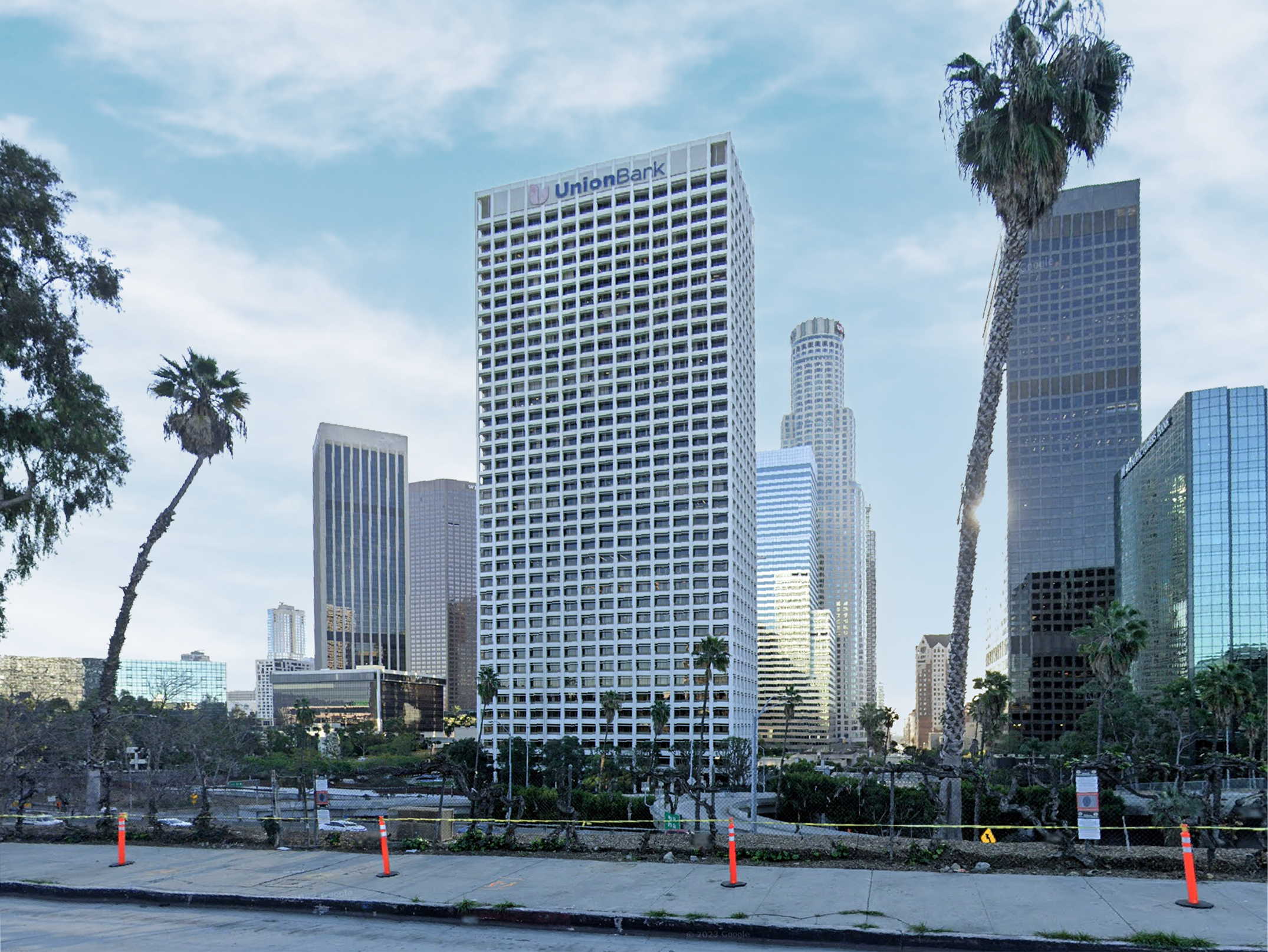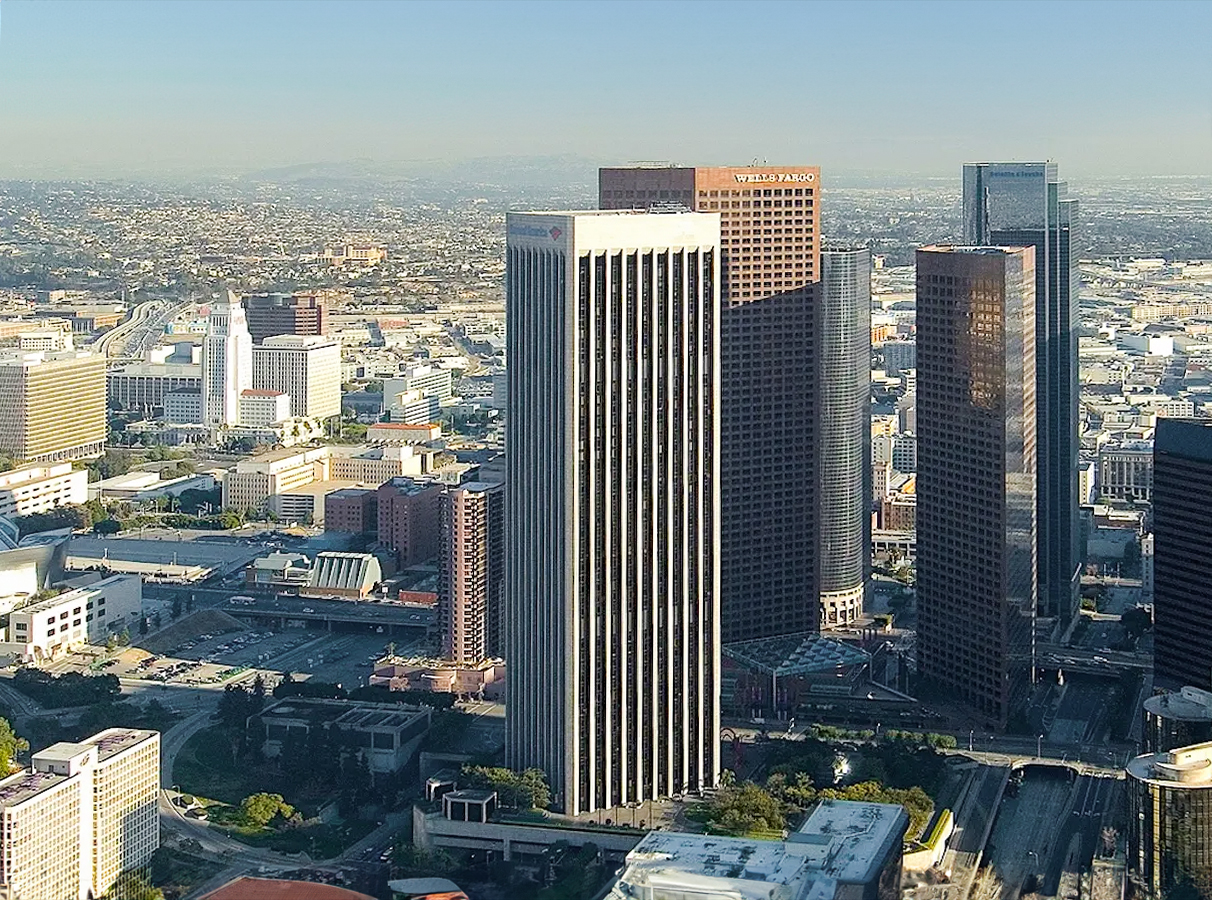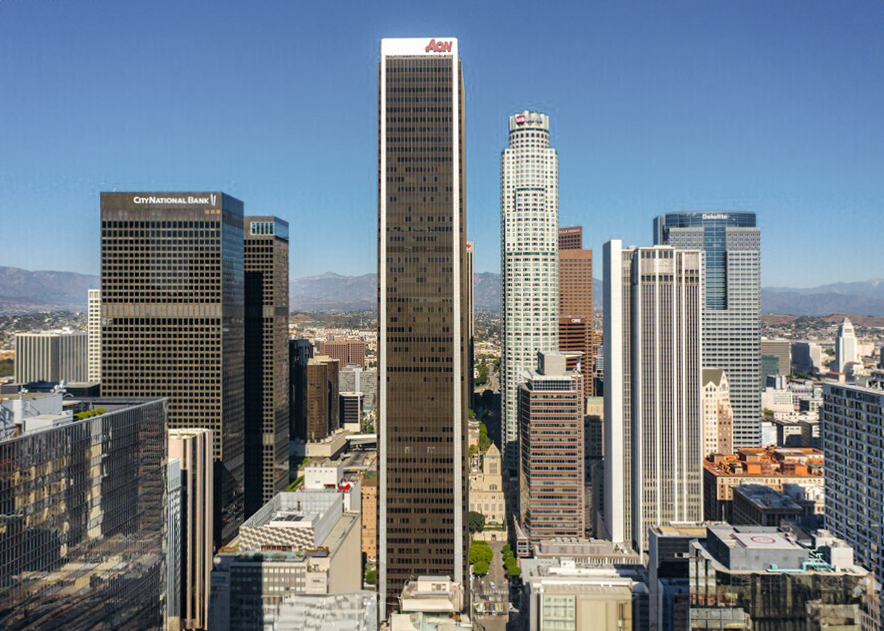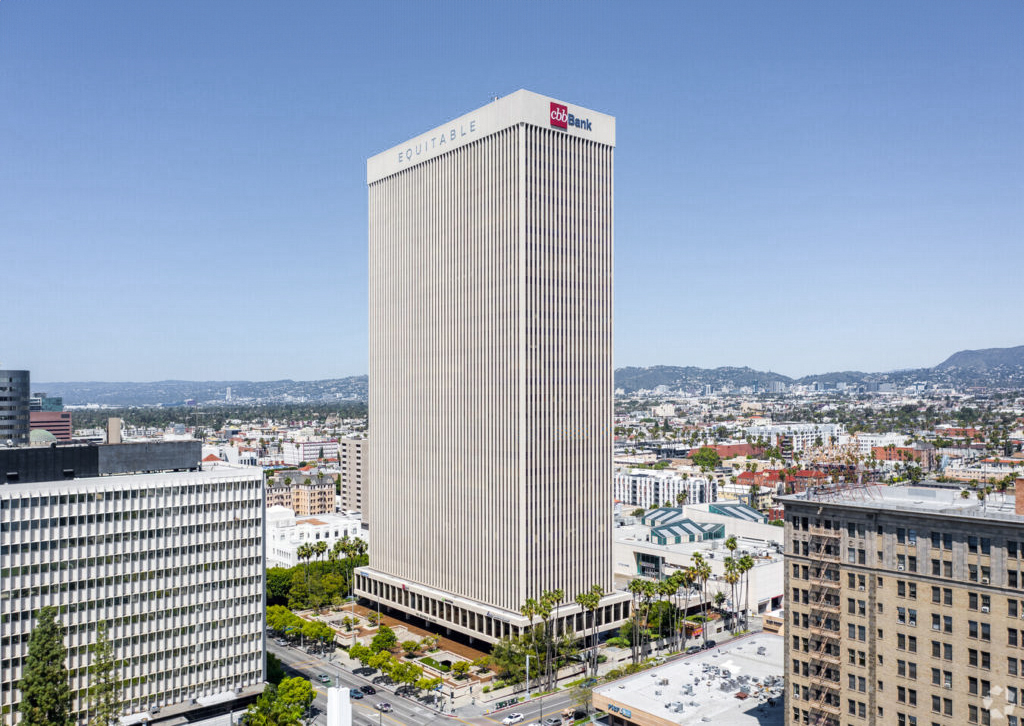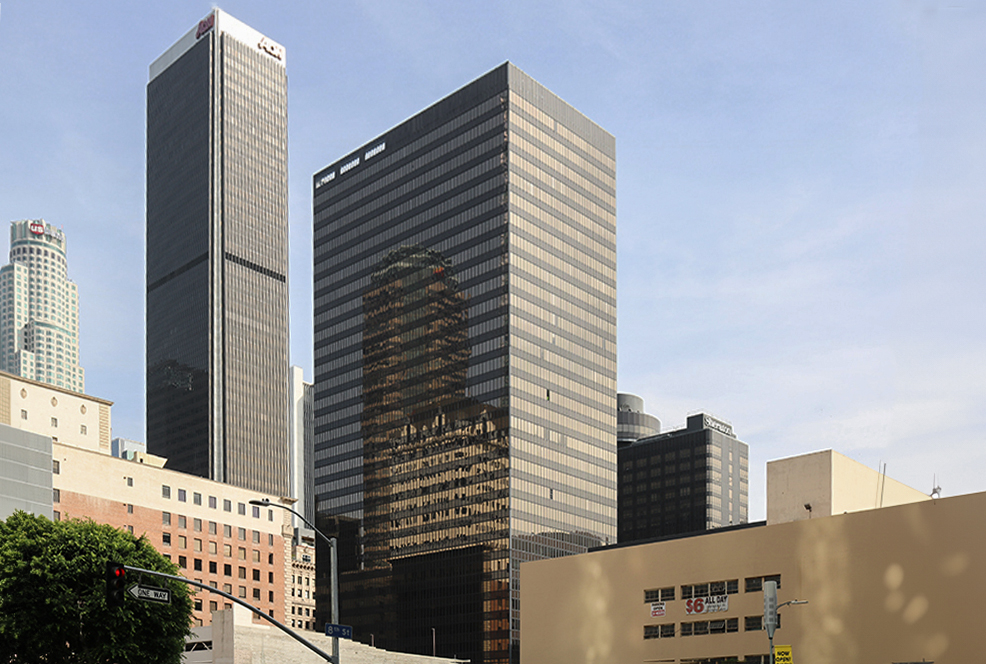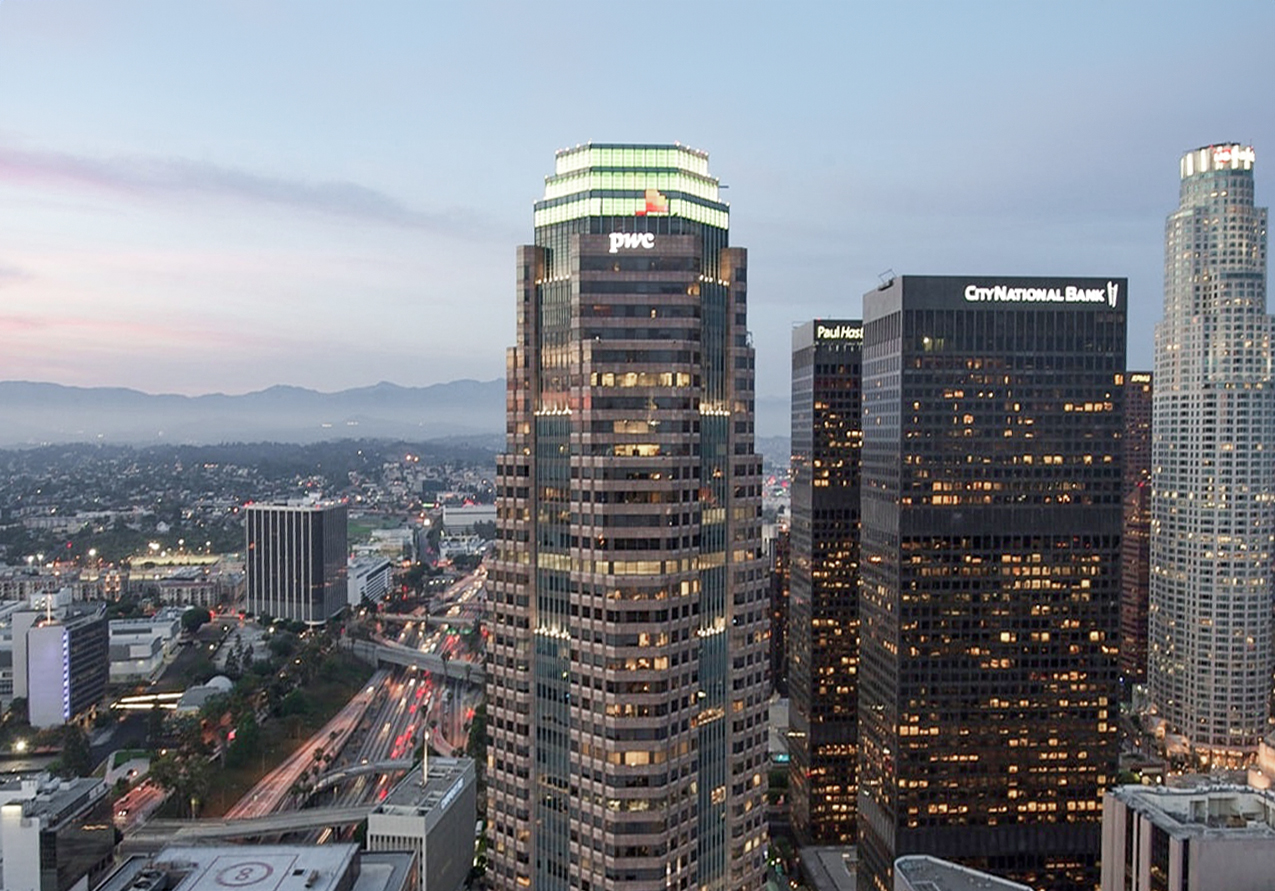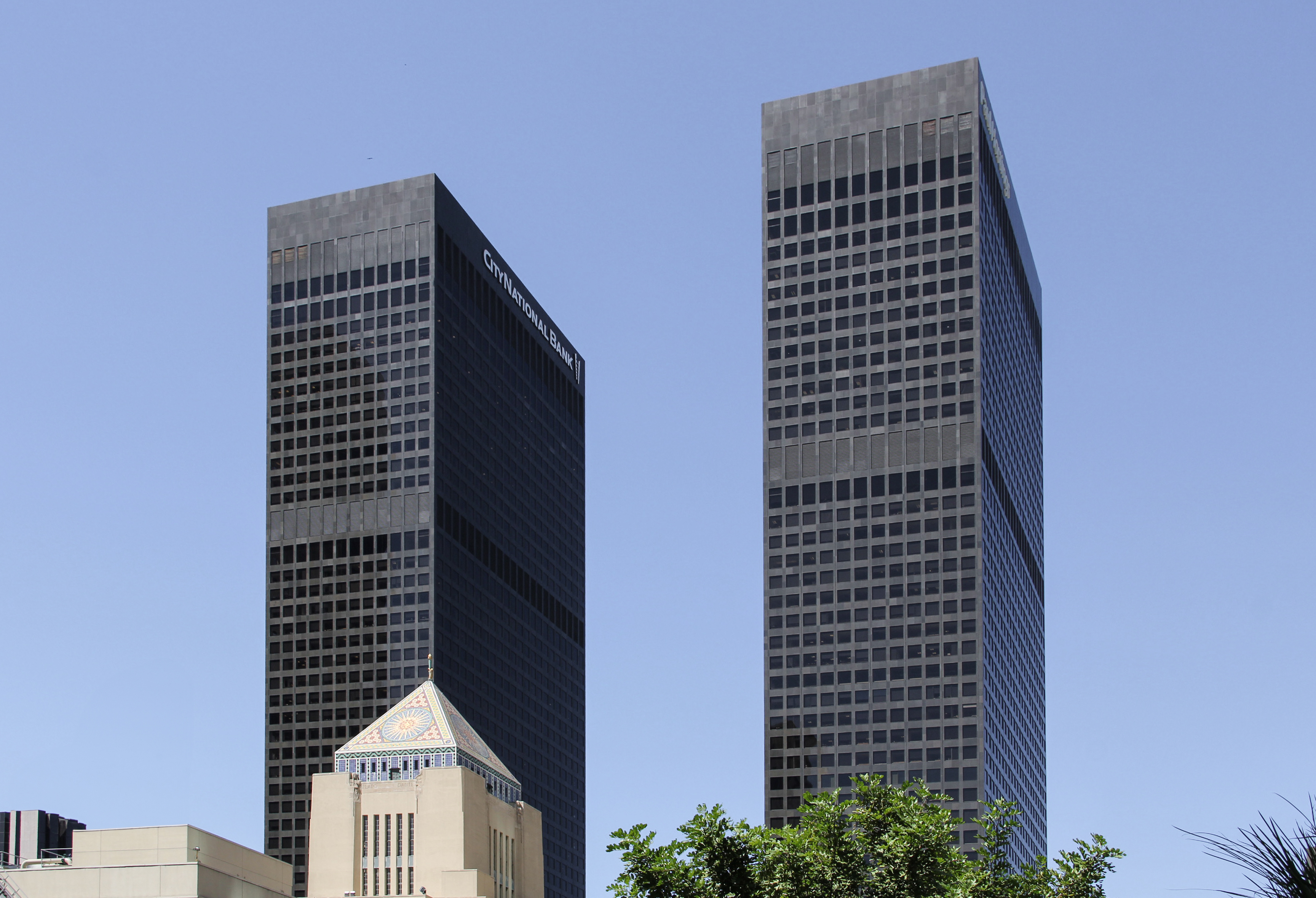The Union Bank Plaza Tower is an International Style skyscraper designed by Albert C. Martin & Associates, in association with Harrison & Abramovitz, and built between 1965 and 1968 in Los Angeles, CA.
Union Bank Plaza Tower is not the only name you might know this building by though. It is common for companies to want to attach their names to iconic buildings when they move in, or for the general public to come up with nicknames, and this one is no exception. The Union Bank Plaza Tower is also known, or has been known as, UBC Plaza, Union Bank of California Building, or Bunker Hill Square.
Its precise street address is 445 South Figueroa Street, Los Angeles, CA. You can also find it on the map here.
The Union Bank Plaza Tower is a structure of significant importance both for the city of Los Angeles and the United States as a nation. The building embodies the distinctive characteristic features of the time in which it was built and the International Style style. Because of that, the Union Bank Plaza Tower was officially included in the Los Angeles Register of Historic Places on February 26th 2020.
The tower is surrounded by a landscaped plaza whos ground, like the tower itself, features a grid-patterned pavement scheme aligned with the steel columns of the building. The plaza is divided into different usage zones distinguished visually by various types of trees and vegetation.
The building underwent a major restoration between 2019 and 2021. The architect commissioned to undertake this restoration was HLW.
